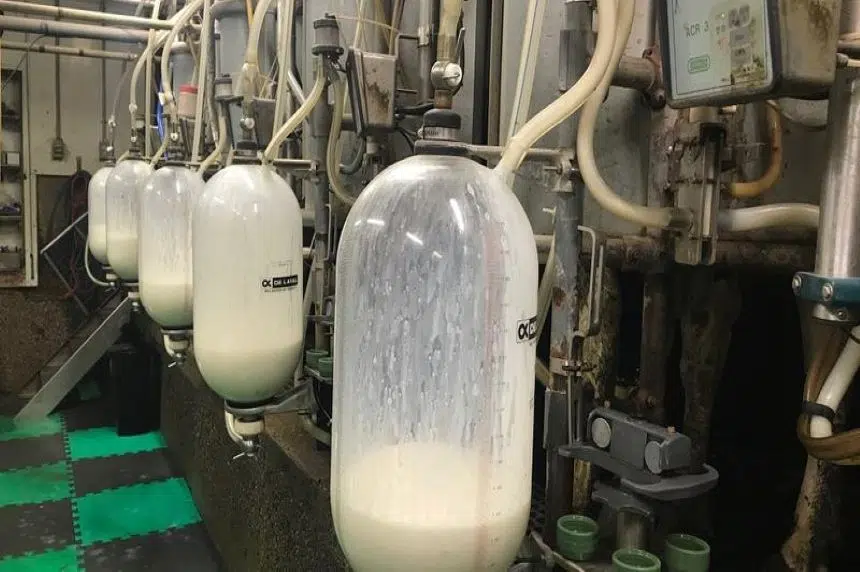Blaine McLeod has been a full-time dairy farmer in the Caronport area near Moose Jaw for the last 41 years.
He has 340 dairy cows and farms about 2,000 acres — a “relatively small” farm by crop standards, he said.
“It keeps us busy, and it’s expensive right now to do it,” he said with a laugh.
Over the decades, he said there have been “ups and downs,” but the last really tough time he can recall was in 1987, when much of Saskatchewan was going through a major drought. It was not unlike the one many farmers experienced in 2021.
“But that time, we didn’t have to go the huge distances to get feed and put it in place … We could manage quite fine,” he recalled.
This year, however, McLeod said even after an increase to the the price of farmgate milk was approved in early February, dairy farmers need help once again.
In a rare move, the Dairy Farmers of Canada are once again requesting a second increase on the price of milk. The Canadian Dairy Commission will hold consultations and make a decision sometime in the next 10 days.
If approved, consumers could see the price of milk going up again this year, effective Sept. 1.
McLeod said as far as he’s aware, dairy farmers are asking for around a 3.5 per cent increase.
“Right now, we heard calls from across Canada (for an increase of) three to five per cent. The five per cent number is not going to happen,” he said. “I believe in the note the Canadian Dairy Commission put out announcing this request for consideration for a price increase that 3 1/2 per cent is what was anticipated as an ask.”
Dairy farm costs skyrocket
McLeod said the cost of running his farm this year for are “unprecedented.”
He finished seeding recently and used an average of 900 litres of diesel fuel a day to put his crop in. It’s a crop he uses solely to feed his cows.
“For 10 days we’re using roughly 1,000 litres a day. That fuel last year cost us about $900 a day. This year it’s costing us $2,000 a day to put the crop in,” he said.
Not only that, he said fertilizer is now around $600 a tonne, and it’s costing more to haul milk.
He also has to buy bales of hay this year after last year’s crop was only about 50 per cent of normal. They’ve gone from $75 to $100 per bale to $250 per bale.
“For us as dairy farmers, we have to have the top-quality stuff or we don’t get good milk production,” he added.
That said, McLeod is trying to cut costs on his farm as much as possible.
“When it’s tight like it is now, you try and find ways to cut costs to the bare minimum without compromising the quality of product that you’re producing and the care for the animals,” he explained.
Some farmers leaving industry
It’s become too much for some farmers, said McLeod. Some couldn’t keep up with the costs and have had to get out of the dairy farming industry.
“We’ve had producers who’ve had to say, ‘I can’t do this anymore. I can’t afford it. I need to exit the business,’ ” he said. “That’s what they’ve done. I can’t say how many, but more than one.”
While McLeod will remain a dairy farmer and he “won’t be going broke,” he said he’s not making any money this year either.
“I’ll be one of those that will be using the equity on my farm and borrowing from the bank to survive during this time period with the hope of making that back in years to come,” he said.
He said farming isn’t a business where “you expect to be made whole every day of the year, or every year even.” It’s solvency and making money over time.
At this point, though, he said there doesn’t appear to be a light at the end of the tunnel. Weather is something many farmers can generally survive, but when all of the other costs this year are piled on top of that, it’s too much for some farmers to make it through.
“The hurts that we’re getting? Yeah, this is an extraordinary year and I’ve never seen it in the 41 years that I’ve dairy farmed,” he said.







